- Home
- Clive Cussler
Devil's Gate Page 8
Devil's Gate Read online
Page 8
Gamay eyed them. “Leaving a site because of a storm that will blow over in a few days?” she said suspiciously.
“Seemed a good excuse to give our guests,” Paul replied.
“What gives?” she asked. “And don’t lie to me, you’ll sleep alone tonight.”
“You know that tanker that went down the other day? Kurt was there when it happened, even rescued the captain’s wife.”
“Of course,” she said. “Trouble finds him.”
Paul laughed. Trouble did have a way of looking Kurt Austin up and coming to visit. Paul and Gamay had often been part of whatever followed. Seemed like this would be no exception.
“Well, there’s more to the sinking than the press has been told,” he explained.
“Like?”
“Pirates killing the crew and deliberately scuttling the ship,” Paul said.
“Doesn’t sound right, does it?” Gamay said.
“Nope,” he said. “Not to Kurt or Dirk, or even the insurance company. With their permission, Dirk has asked us to take Rapunzel over and take a look.”
Gamay took her robotic gloves off and sat down to undo her boots. “Sounds simple enough,” she said. “Why do you look concerned?”
“Because Dirk told me to be concerned,” Paul said. “He figures someone went to great lengths to hide whatever happened on that ship. And that being the case, whoever they are, they might get a little upset with the likes of us poking around.”
She reached out and took his hand.
“Do you think you can get Rapunzel inside a sunken ship?” he asked.
“Would have liked to finish the test,” she said, “but yes, I think we can get her inside.”
12
AS IT RACED THROUGH THE WATER a hundred feet below the surface, the Barracuda looked more like a manta ray with stubby wings than a submarine—or even a barracuda, for that matter. About half the size of a compact car, her wedge-shaped snout narrowed, both horizontally and vertically, with a slightly bulbous expansion at the very tip.
This was a hydrodynamic feature that got the water moving smoothly around and over the vessel, reducing the drag and increasing both her ability to accelerate and her top-end speed.
In addition, her stainless steel skin was covered in microscopic V-shaped grooves, too small to be seen from a distance except as a sort of haze on the finish. The grooves were similar to the coatings used on the hulls of racing yachts, and they too added speed by reducing the drag.
Because she was eventually expected to do salvage work, an enclosed bay in the root of each wing held assorted equipment: cutting torches, grappling claws, and other tools. In truth, the Barracuda had been designed more like a stealth fighter than a submarine. The question was, could she fly like one?
With Kurt and Joe sitting in tandem, Kurt at the controls and Joe just behind him monitoring all the systems, the Barracuda surged through the water at 34 knots. Joe insisted she could make 45, but that would rapidly drain the battery. To make two laps around the race’s fifty-mile course, 34 would be the best they could do.
“Coming up on a depth change,” Joe mentioned.
The race was not just a horizontal affair, where the submarines could run at top speed and come home. It required maneuvers to be fulfilled: depth changes, course changes, even a section that required them to weave through a group of pylons, charge forward to a certain point and then back out, before turning around and racing off to the next buoy.
The competition itself was a three-stage process, with a hundred-thousand-dollar prize being offered to the winner of each stage and a cool ten million to the overall victor.
“Can you believe these guys are offering ten million to the winner?” Joe said excitedly.
“You realize NUMA gets that money if we win,” Kurt replied.
“Don’t depress me,” Joe said. “I’m dreaming. Gonna get a ranch in Midland and a truck the size of a small earthmover.”
Kurt laughed. For a moment, he considered what he might do with ten million dollars, and then he realized he would probably do exactly what he was doing right now. Work for NUMA. See the world. Sometimes save an ocean or two.
“Again, who put up the money?”
“African Offshore Corporation,” Joe said. “They’re big into continental-shelf drilling.”
Kurt nodded. The supposed point of the whole competition was to develop submersibles that could be used to operate quickly, safely, and independently at depths of up to a thousand feet. Kurt guessed that publicity had more to do with it than anything else.
Still, even if he wouldn’t get the money, Kurt liked to win.
“In fifteen seconds, begin descent to two hundred fifty feet,” Joe said.
Kurt put his hand to a keypad, typed in 2-5-0, and held his finger over the “Enter” button. Either Kurt or Joe could change the depth manually if they wanted, but the computer was more precise.
“Three . . . two . . . one . . . mark.”
Kurt hit “Enter,” and they heard the sound of a small pump as it pushed oil from the rear into a forward chamber of the sub. This caused the nose to grow heavier and pitch down. With no need to take on water, to angle dive planes, or to adjust power, the Barracuda continued at flank speed, descending, and actually accelerating as it dove.
Around them the light began to fade, the color changing from a bright aquamarine to a darker blue. Up above, it was a beautiful sunny day, with high pressure all around.
“How we doing?” Kurt asked.
“Four miles to the outer marker,” Joe said.
“What about the other contestants?”
It was a timed race, the subs having left at ten-minute intervals to keep them apart, but Kurt and Joe had already passed one vessel. Somewhere up ahead they would catch another competitor.
“We could ram them if they get in our way,” Joe said.
“This isn’t NASCAR,” Kurt replied. “I’m thinking that would be some kind of points deduction.”
As Kurt kept the Barracuda precisely online, he heard Joe tapping keys behind him.
“According to the telemetry,” Joe said, “the XP-4 is a half mile ahead. We should see his taillights in about ten minutes.”
That sounded good to Kurt. The next depth change was in seven minutes. They would come up to one hundred fifty feet, cruise over a ridge, and race along near the top of an underwater mesa—a flat plain that had once been an underwater lava field.
“Easier and more fun to pass people when they can see you go by,” he said.
Seven minutes later, Kurt put the Barracuda into a climb, they zoomed up over the ridge and leveled off at one hundred fifty feet. A moment later the radio crackled.
“. . . experiencing elec—. . .—blems . . . batteries . . . system malfunc—. . .”
The garbled low-frequency signal was hard to make out. But it rang alarm bells in Kurt’s mind.
“You get that?”
“I couldn’t make it out,” Joe said. “Someone’s having problems though.”
Kurt grew quiet. All the subs had been equipped with a low-frequency radio that, theoretically, could reach floating buoys along the race path and be retransmitted to the referee and safety vessels stationed along the route. But the signal was so weak, Kurt couldn’t tell who was transmitting.
“Did he say electrical problems?”
“I think so,” Joe said.
“Call him out,” Kurt said.
A moment later Joe was on the radio. “Vessel reporting problems. Your transmission garbled. Please repeat.”
The seconds ticked by with no response. Kurt’s sense of danger rose. To make the submarines fast, most had been built with somewhat experimental technology. Some even used lithium ion batteries that, in rare circumstances, could catch fire. Others used experimental electrical motors and even hulls of thin polymers.
“Vessel reporting problems,” Joe said again. “This is Barracuda. Please repeat your message. We will relay to the surface.”
Up ahead, Kurt saw a trail of bubbles. It had to be the wake of the XP-4. He’d forgotten all about it and was now driving right up its tailpipe. He banked the Barracuda to the left and then noticed something odd: the trail of bubbles arced down and to the right. It didn’t make any sense, unless . . .
“It’s the XP-4,” he said. “It’s got to be.”
“Are you sure?”
“Check the GPS.”
Kurt waited while Joe switched screens. “We’re right on top of him.”
“But I don’t see him anywhere,” Kurt said.
Joe went right back to the radio. “XP-4, do you read?” Joe said. “Are you reporting trouble?”
A brief burst of static came over the radio and then nothing.
“We’ll lose if we turn,” Joe said.
Kurt had considered that. The rules were strict.
“Forget the race,” Kurt said, and he banked the Barracuda into a wide right turn, slowing her pace and manually taking over depth control. Throwing on the Barracuda’s lights, he searched for the trail of bubbles.
“What’s the XP-4 made of?” he asked. Joe knew the other competitors far better than he did.
“She’s stainless steel like us,” Joe said.
“Maybe we could use the magnetometer to help find her. A thousand pounds of steel ought to get us a reading from this distance.”
Kurt spotted what he thought was the line of bubbles. He turned to follow the curving, descending trail. Behind him Joe booted up the magnetometer.
“Something’s wrong,” Joe said, fiddling with the controls.
“What’s the problem?”
“See for yourself.”
Joe pressed a switch, and the central screen on Kurt’s display panel changed. The lines of azimuth and magnetic density should have been a relatively clear display, but the various lines were spiking and dropping, and the directional indicator was pivoting like a compass needle just spinning in circles.
“What the heck’s wrong with it?” Kurt mumbled.
“Don’t know.”
The radio buzzed with static again and this time a voice cut through it.
“. . . continued problems . . . smoke in cabin . . . possible electrical fire . . . shutting down all systems . . . please—”
The transmission ended abruptly, and it chilled Kurt’s blood.
He looked through the curved Plexiglas windshield of the Barracuda , slowing the small submarine even further. As the speed bled off, he pitched the nose over until they were angled almost straight down.
Dropping slowly through the water, he scanned the bottom. At one hundred fifty feet, light from the surface still filters through, but the surrounding color is a pure dark blue, and the visibility is limited to somewhere around fifty feet.
Increasing that visibility were the Barracuda’s lights. Since seawater scatters and absorbs longer wavelengths of light rapidly, Joe had installed special bulbs that burned in a bright yellow-green part of the visible spectrum. The lights helped cut through the gloom, and as the Barracuda approached the bottom Kurt spotted what looked like a gouge in the sandy sediment.
He turned to follow it.
“There,” Joe said.
Up ahead, a tubular steel shape that looked more like a traditional submarine lay on its side. The designation “XP-4” could be seen, painted in large black letters.
Kurt circled around it until he reached a spot from which the canopy could be viewed. Bubbles were pouring slowly from the tail end of the sub, but the cockpit seemed intact.
He shut the lights off and tried to hover alongside, though the current was making it difficult.
“Signal them.”
As Kurt struggled to keep the Barracuda in position, Joe grabbed a penlight, aimed it out the window at the XP-4, and tapped out a message in Morse code.
Kurt could see some movement inside, and then a message came back.
“All . . . elec . . . pwr . . . out,” Joe said, translating.
Kurt felt them drifting again and tapped the thruster.
“They have to have oxygen,” Kurt said, reviewing in his mind the safety rules the event’s organizers had put in place. “Can they pop the canopy?”
Joe flashed the light on and off, putting the message through. The response dashed those hopes.
“Canopy . . . elec . . . trapped.”
“Who ever heard of making your canopy electric?” Kurt mumbled. Then he looked back at Joe.
“Ours has a manual release,” Joe assured him.
“Just checking.”
Joe smiled. “Can we tow them out?”
“Looks like we’ll have to,” Kurt said. “Use the hook.”
Behind him, Joe activated the controls for the grappling system, and a panel on the right wing of the Barracuda opened. A folded metallic apparatus emerged. Once it was locked into place, it unfolded into a long metallic arm with a claw on the end.
Even as the claw extended, Kurt realized they were drifting away from the XP-4.
“Get me closer,” Joe said.
Kurt nudged the thrusters again, and the Barracuda angled toward the rear section of the XP-4 to a point where a handle extended from its hull. On the surface, the XP-4’s mother ship would lock onto this handle with a crane to hoist the sub out of the water. Kurt and Joe would try to do the same down below.
“Maybe this could help our salvage grade,” Joe said.
“Just grab the sub,” Kurt said.
The claw extended and missed. Kurt adjusted their position, and Joe tried again and missed again.
“Something’s wrong,” Joe said.
“Yeah, your aim,” Kurt said.
“Or your driving,” Joe said.
Kurt didn’t want to hear that, but it was true. And yet each time he adjusted for the current, the Barracuda seemed to get pulled off-line again. He glanced outside at the sediment in an attempt to get the best read on the current.
“Ah, Kurt . . . ?” Joe said.
Kurt ignored him. Something definitely was wrong. Unless his eyes had been damaged somehow, the Barracuda was drifting in the opposite direction of the current. And, strangely enough, the XP-4 was moving as well, albeit at a slower rate as she was dragging along the bottom.
“Kurt,” Joe said with more urgency.
“What?”
“Look behind us.”
Kurt turned the sub a few degrees and craned his neck around. The sandy bottom gave way to darkness. They were drifting toward a cliff of sorts. On the charts it appeared as a deep circular depression with a rise in the middle: the caldera of a volcano that had once been active here thousands of years before.
Thoughts of the damaged XP-4 tumbling down the edge of that caldera with two men trapped inside were enough to make Kurt forget about the strange movements of both subs. All he wanted to do was grab the XP-4 and get out of there.
He pressed forward until they were nose to nose with the other sub. Joe stabbed at the small handle with the grappling claw but could not catch it. Sediment began to stir up around them as Kurt goosed the thrusters.
They’d reached the point where the ground had started sloping away.
Whatever was going on, they were being dragged toward the caldera. Kurt used main power, blocking the XP-4, pumping the throttle, in an attempt to hold them back.
The XP-4 began to swing, pivoting against the nose of the Barracuda . It was being pulled past her. The caldera yawned behind them.
“It’s now or never, Joe.”
Joe grunted as he worked the controls. The arm extended, and the claw locked on.
“Got him,” Joe said.
The XP-4 had reached the edge and was tumbling; Kurt had no choice but to let the Barracuda fall with it for a moment. If he gunned the throttle, the arm would bend and snap under the load.
They slipped off the edge, drifting backward and out into the dark. Kurt turned the nose of the Barracuda away from the XP-4. The grappling claw pivoted until it was pointing to the rear, and
the two subs fell sideways as Kurt brought the main thruster slowly up to power.
Slowly, the Barracuda pulled the XP-4 away from the caldera’s wall and began to level off. Both vessels were still sinking, still being strangely drawn toward the center of the volcano.
The Barracuda began to accelerate, with the XP-4’s torpedo-shaped body trailing behind them. As long as Kurt towed them and didn’t twist or bend the arm, he was fairly confident it would hold.
“We’re still descending,” Joe said.
Kurt was aware of that but couldn’t explain it.
“Maybe they took on some water,” he guessed. He added more power until the thruster was almost fully on. The descent slowed, and they began to pick up speed, speed they would need to climb.
A shape loomed up ahead, a hundred-foot column of rock that rose up from the center of the caldera like a chimney. If he had to guess, Kurt would have said it was the volcanic plug that cooled and hardened when this particular vent for the earth’s heat had gone dormant. Problem was, it lay directly in their path.
“Should I blow the tanks?” Joe asked.
“No, we’ll lose them,” Kurt said. He went to full power and slowly pulled the nose up. They were approaching the tower of rock awfully fast.
“Come on,” Kurt urged.
It felt as if the tower of rock was drawing them in like a black hole. And with the weight they were towing, they seemed almost incapable of rising at anything more than the slowest of speeds.
“Climb, damn it,” Kurt grunted.
They were heading right into it, like a plane flying into a cliff. All light from the surface was cut off by the shadow of the rock. They were rising but not fast enough. It looked like they were going to hit it head-on.
“Come on,” Kurt said.
“Kurt?” Joe said, his hand over the ballast control.
“Come on, you—”
Suddenly, they saw light again, and at the last second they rose up over the tower. Kurt leveled off, allowing their speed to increase.
“Think we scraped the paint,” Kurt said.
Behind him, Joe breathed a sigh of relief. “Look at the magnetometer,” he said.

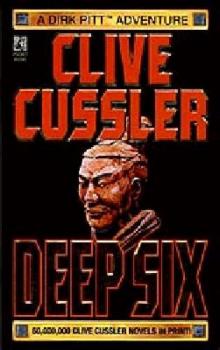 Deep Six
Deep Six Odessa Sea
Odessa Sea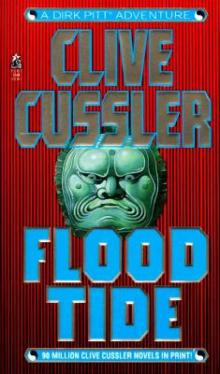 Flood Tide
Flood Tide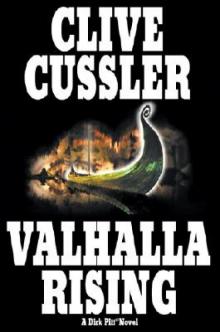 Valhalla Rising
Valhalla Rising Thriller 2
Thriller 2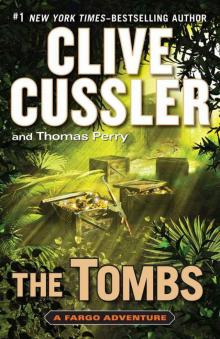 The Tombs
The Tombs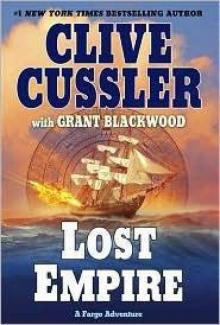 Lost Empire
Lost Empire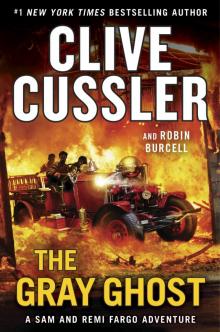 The Gray Ghost
The Gray Ghost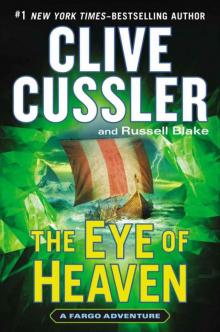 The Eye of Heaven
The Eye of Heaven Polar Shift
Polar Shift The Kingdom
The Kingdom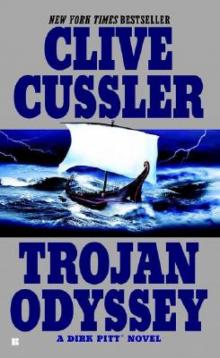 Trojan Odyssey
Trojan Odyssey Shadow Tyrants
Shadow Tyrants Nighthawk
Nighthawk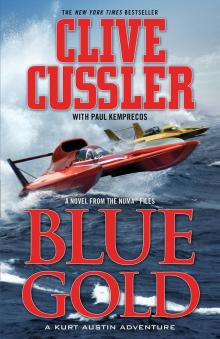 Blue Gold
Blue Gold Serpent
Serpent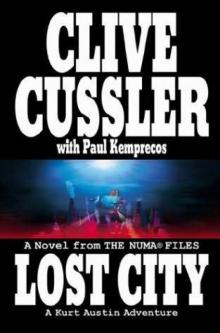 Lost City
Lost City The Gangster
The Gangster White Death
White Death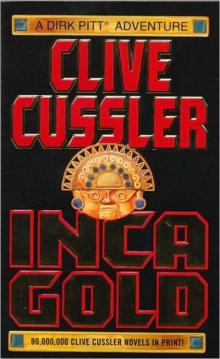 Inca Gold
Inca Gold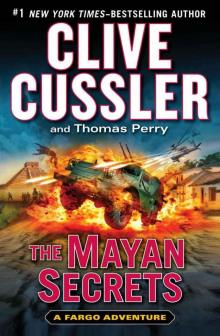 The Mayan Secrets
The Mayan Secrets The Pharaoh's Secret
The Pharaoh's Secret The Emperor's Revenge
The Emperor's Revenge Corsair
Corsair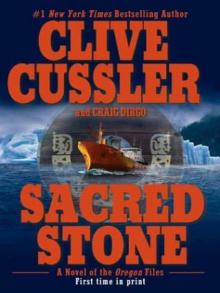 Sacred Stone
Sacred Stone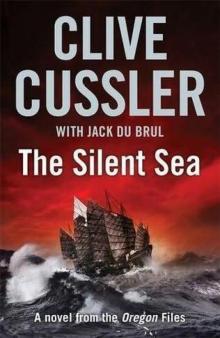 The Silent Sea
The Silent Sea The Rising Sea
The Rising Sea Black Wind
Black Wind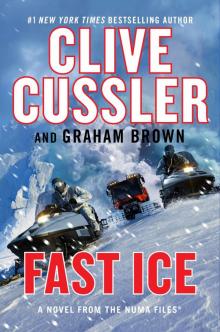 Fast Ice
Fast Ice Ghost Ship
Ghost Ship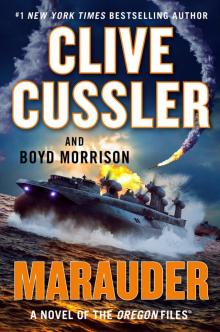 Marauder
Marauder The Thief
The Thief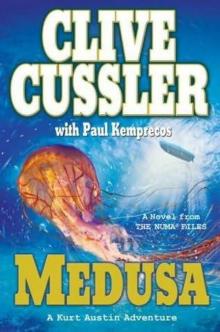 Medusa
Medusa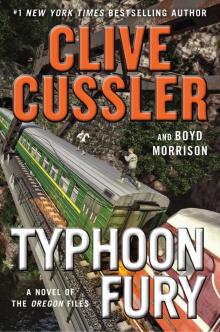 Typhoon Fury
Typhoon Fury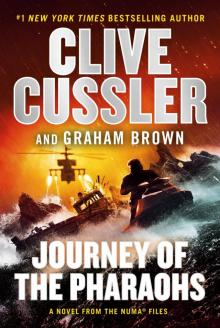 Journey of the Pharaohs
Journey of the Pharaohs The Navigator
The Navigator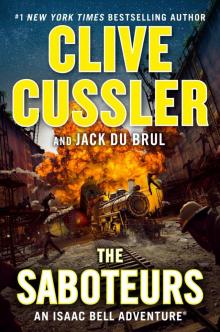 The Saboteurs
The Saboteurs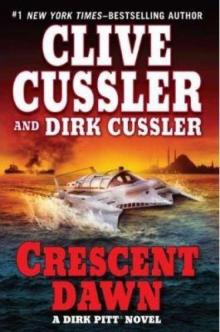 Crescent Dawn
Crescent Dawn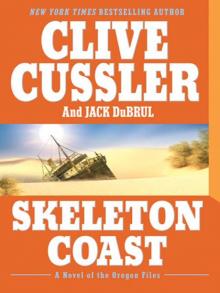 Skeleton Coast
Skeleton Coast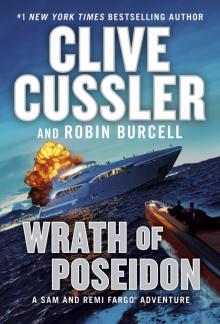 Wrath of Poseidon
Wrath of Poseidon The Mediterranean Caper
The Mediterranean Caper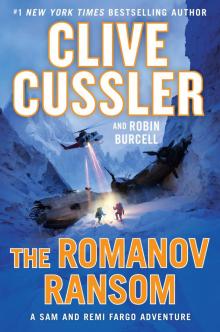 The Romanov Ransom
The Romanov Ransom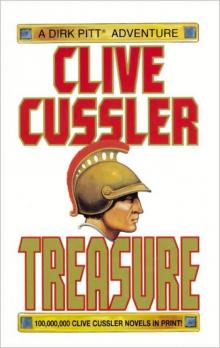 Treasure
Treasure The Race
The Race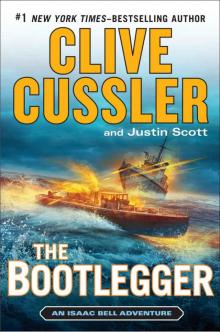 The Bootlegger
The Bootlegger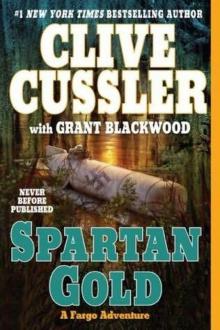 Spartan Gold
Spartan Gold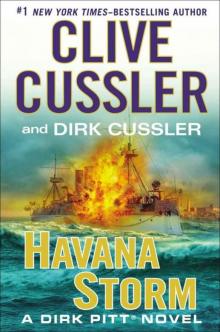 Havana Storm
Havana Storm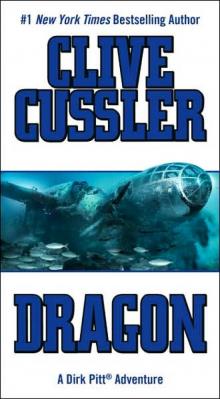 Dragon
Dragon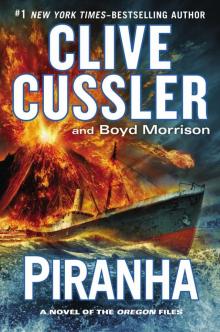 Piranha
Piranha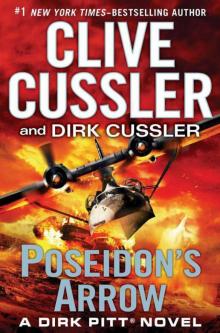 Poseidon's Arrow
Poseidon's Arrow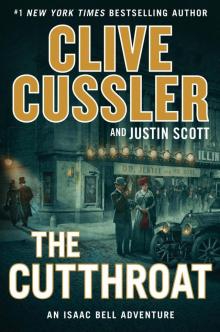 The Cutthroat
The Cutthroat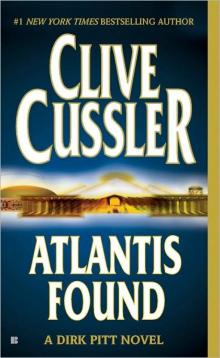 Atlantis Found
Atlantis Found The Jungle
The Jungle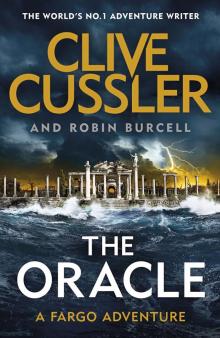 The Oracle
The Oracle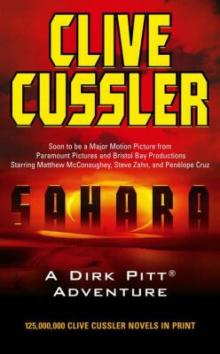 Treasure / Dragon / Sahara: Clive Cussler Gift Set
Treasure / Dragon / Sahara: Clive Cussler Gift Set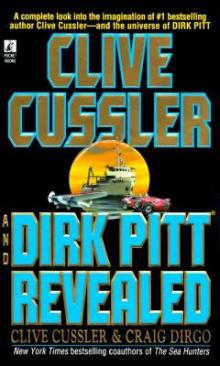 Clive Cussler and Dirk Pitt Revealed
Clive Cussler and Dirk Pitt Revealed The Sea Hunters
The Sea Hunters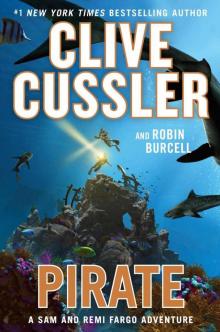 Pirate
Pirate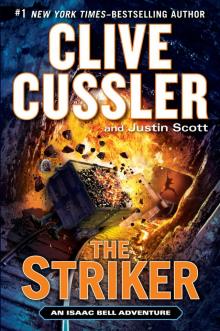 The Striker
The Striker Plague Ship
Plague Ship The Wrecker
The Wrecker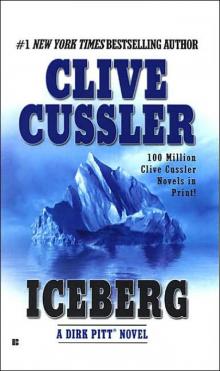 Iceberg
Iceberg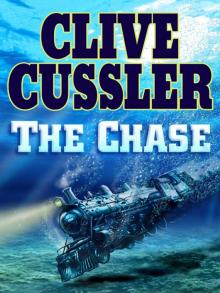 The Chase
The Chase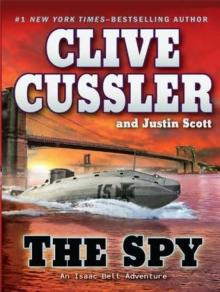 The Spy
The Spy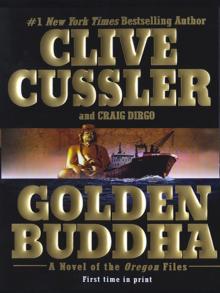 Golden Buddha
Golden Buddha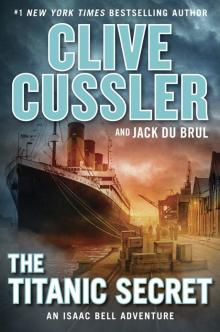 The Titanic Secret
The Titanic Secret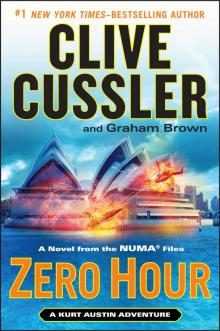 Zero Hour
Zero Hour Fire Ice
Fire Ice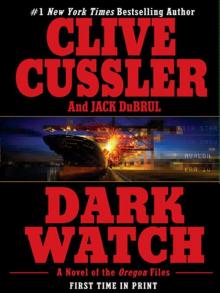 Dark Watch
Dark Watch The Storm
The Storm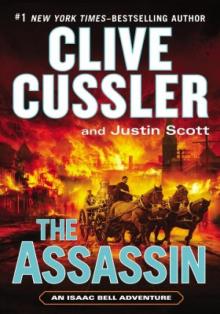 The Assassin
The Assassin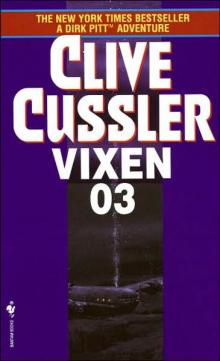 Vixen 03
Vixen 03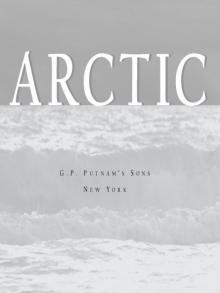 Arctic Drift
Arctic Drift Night Probe!
Night Probe! Cyclops
Cyclops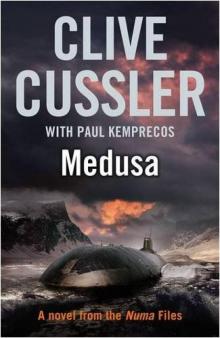 Medusa nf-8
Medusa nf-8 Shock Wave dp-13
Shock Wave dp-13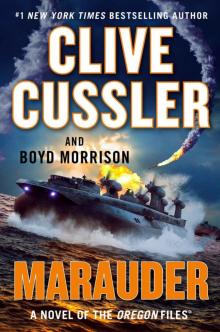 Marauder (The Oregon Files)
Marauder (The Oregon Files)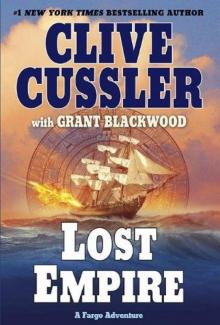 Lost Empire fa-2
Lost Empire fa-2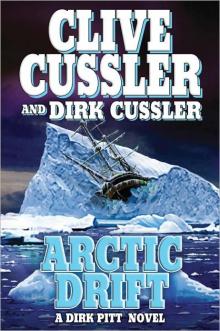 Arctic Drift dp-20
Arctic Drift dp-20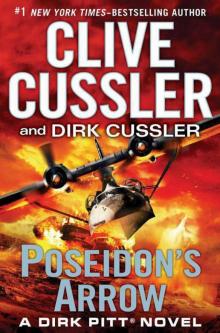 Dirk Pitt 22 - Poseidon's Arrow
Dirk Pitt 22 - Poseidon's Arrow Treasure of Khan dp-19
Treasure of Khan dp-19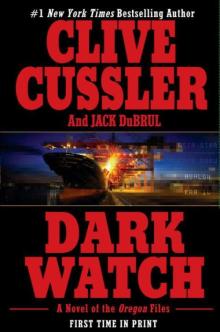 Dark Watch of-3
Dark Watch of-3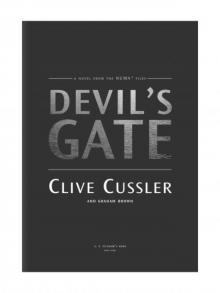 Devil's Gate
Devil's Gate The Sea Hunters II: More True Adventures with Famous Shipwrecks
The Sea Hunters II: More True Adventures with Famous Shipwrecks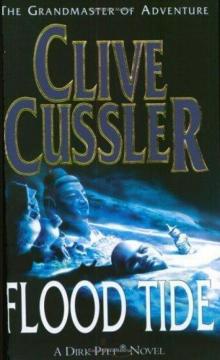 Flood Tide dp-14
Flood Tide dp-14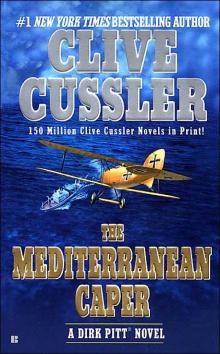 The Mediterranean Caper dp-2
The Mediterranean Caper dp-2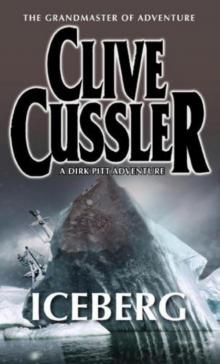 Iceberg dp-3
Iceberg dp-3 Sahara dpa-11
Sahara dpa-11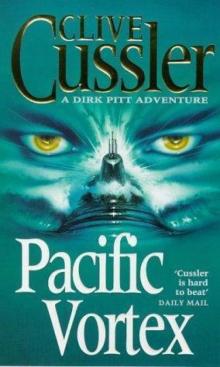 Pacific Vortex! dp-1
Pacific Vortex! dp-1 Deep Six dp-7
Deep Six dp-7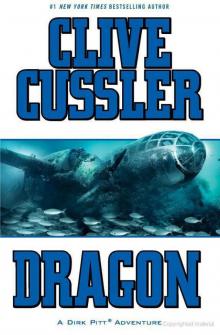 Dragon dp-10
Dragon dp-10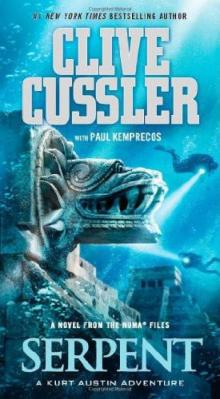 Serpent nf-1
Serpent nf-1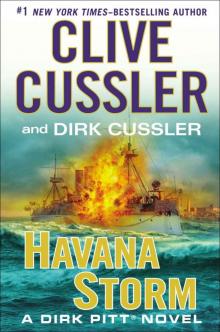 Havana Storm (Dirk Pitt Adventure)
Havana Storm (Dirk Pitt Adventure)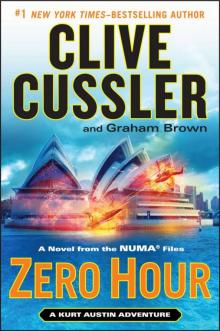 Zero Hour nf-11
Zero Hour nf-11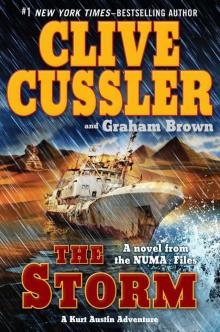 The Storm nf-10
The Storm nf-10 The Thief ib-5
The Thief ib-5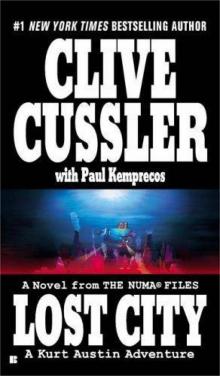 Lost City nf-5
Lost City nf-5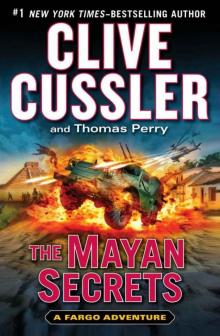 The Mayan Secrets fa-5
The Mayan Secrets fa-5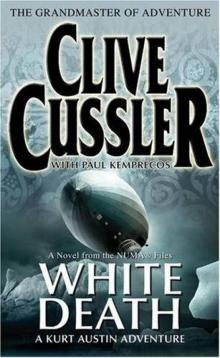 White Death nf-4
White Death nf-4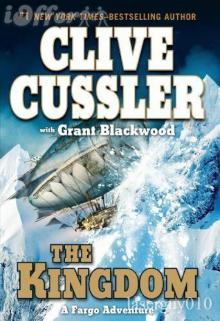 The Kingdom fa-3
The Kingdom fa-3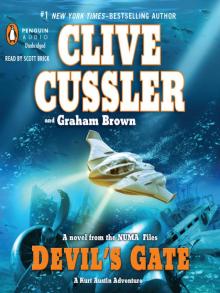 Devil's Gate nf-9
Devil's Gate nf-9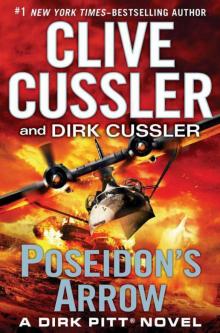 Poseidon's Arrow dp-22
Poseidon's Arrow dp-22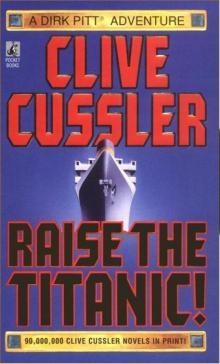 Raise the Titanic dp-4
Raise the Titanic dp-4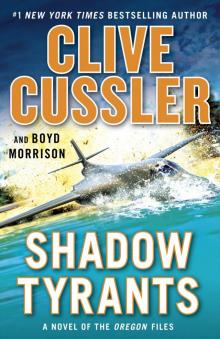 Shadow Tyrants--Clive Cussler
Shadow Tyrants--Clive Cussler Sacred Stone of-2
Sacred Stone of-2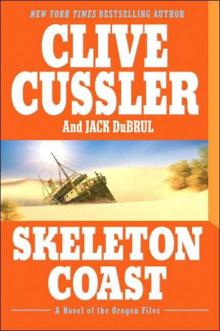 Skeleton Coast tof-4
Skeleton Coast tof-4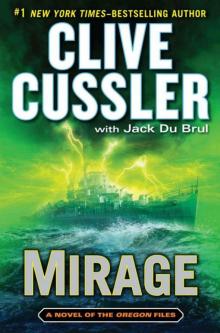 Mirage tof-9
Mirage tof-9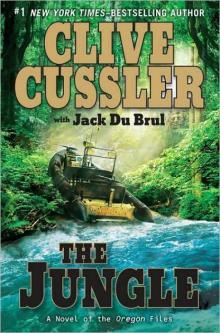 The Jungle of-8
The Jungle of-8 The Emperor's Revenge (The Oregon Files)
The Emperor's Revenge (The Oregon Files)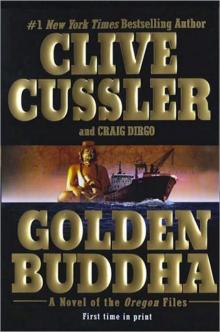 Golden Buddha of-1
Golden Buddha of-1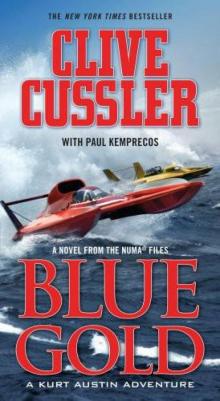 Blue & Gold
Blue & Gold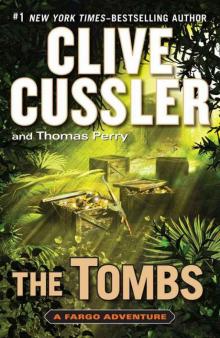 The Tombs fa-4
The Tombs fa-4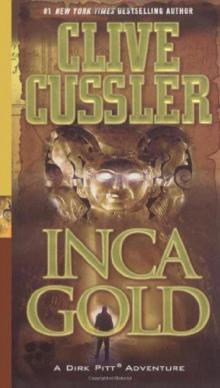 Inca Gold dp-12
Inca Gold dp-12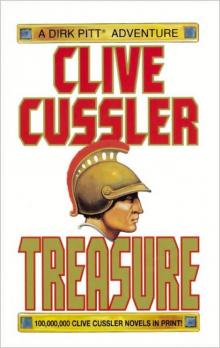 Treasure dp-9
Treasure dp-9 Atlantis Found dp-15
Atlantis Found dp-15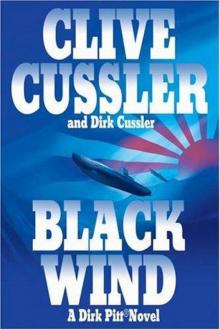 Black Wind dp-18
Black Wind dp-18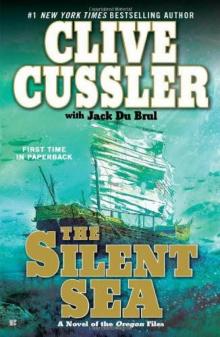 the Silent Sea (2010) tof-7
the Silent Sea (2010) tof-7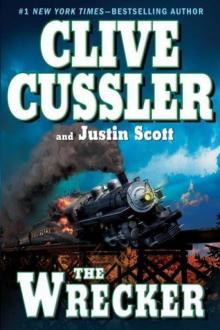 The Wrecker ib-2
The Wrecker ib-2 Fire Ice nf-3
Fire Ice nf-3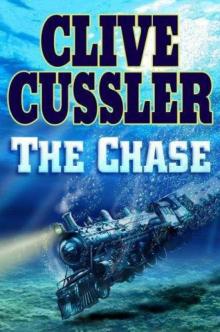 The Chase ib-1
The Chase ib-1 Sahara
Sahara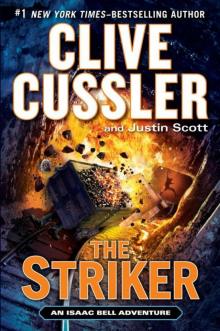 The Striker ib-6
The Striker ib-6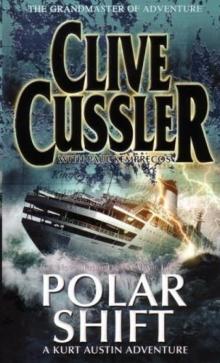 Polar Shift nf-6
Polar Shift nf-6 The Race ib-4
The Race ib-4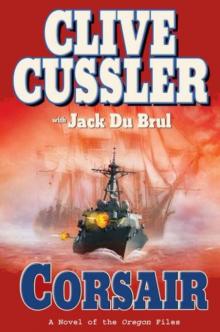 Corsair of-6
Corsair of-6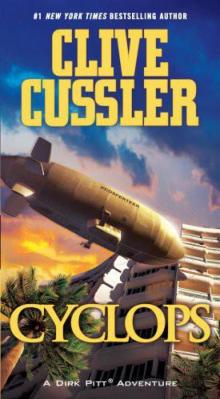 Cyclops dp-8
Cyclops dp-8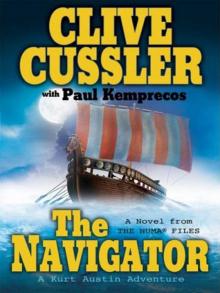 The Navigator nf-7
The Navigator nf-7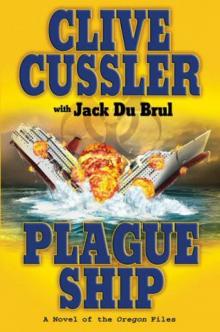 Plague Ship tof-5
Plague Ship tof-5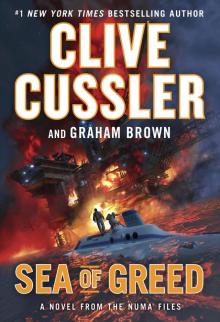 Sea of Greed
Sea of Greed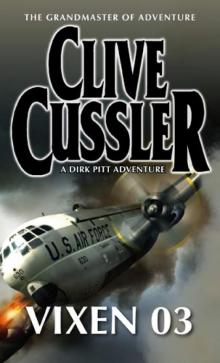 Vixen 03 dp-5
Vixen 03 dp-5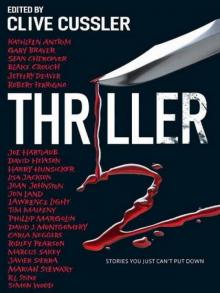 Thriller 2: Stories You Just Can't Put Down
Thriller 2: Stories You Just Can't Put Down